An Archive That Keeps the Waves Rolling
posted April 27, 2022 1 Comment
![]()
By Peter Monaghan
The golden age of the surf film came in the 1970s, to be sure. That’s when lightweight cameras could readily be hauled out into the shallows and the swells to capture the daring of “surfies” who risked being crushed by cascading pipes of ocean or dumped rudely against sandy sea floors.
For the thrill of the ride.
Like the surfing, the filming had a sense of improvisation about it. The forms and habits of the surf film had not yet been settled, and when the films brought the rides and the waves on shore, they captivated viewers who knew the thrills of surfing at first hand, and riveted many others who were living the experience newly through the lens.
Do you have to be over 60 to long for those times, and see value in the startling film record of them?
Not at all, says Jolyon Hoff (below), a documentary filmmaker, diehard surfie, and now the force behind The Australian & New Zealand Surf Film Archive, based in Adelaide in the state of South Australia. Its goal is to locate and restore as many old-school surf films as possible and make them available for public viewing, free of charge.
And, to hark to the spirit of those times, and surfing’s contributions to it. “That was when youth culture was taking off,” says Hoff. Surfing became one of the clarion calls of new ways of life in Australia, as elsewhere. “It was a rebellion against the conservative culture of the times,” Hoff says. “To get in the car and head up the coast and go surfing was a pretty rebellious act, back in the day.”
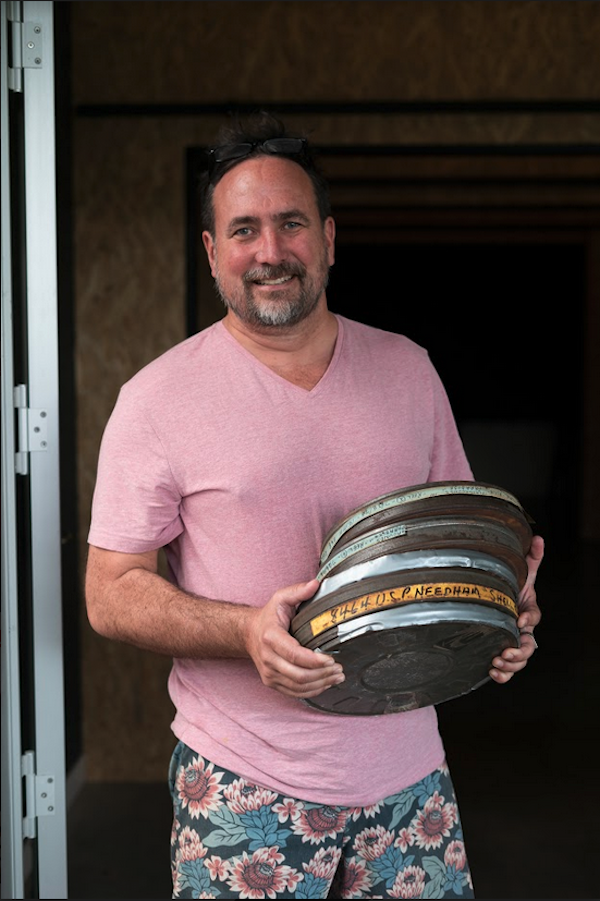
Jolyon Hoff. All images courtesy Australian & New Zealand Surf Film Archive
In the 1970s in Australia, surf films recorded that lifestyle and the way it transformed many sleepy towns along the Eastern and Southern seaboards, and soon out West. Hoff is not old enough to have experienced the first surf-film waves at first hand. But he says he had a surfer uncle, and “I idolized him and looked at all the old surfing magazines and thought ‘this was the coolest thing ever, to go up the coast and go surfing. I’m still trying to do that.”
In his childhood he began going on road trips to the towns that had, a decade and more earlier, become Australia’s surfing meccas. And he heard the tales. “There was a kind of unofficial cinema network for surf movies, in a way,” he says, “where they’d screen at the [Sydney] Opera House [it had a great basement art cinema – ed.] and then they’d all follow each other and do a kind of cinema tour. And everyone had to come. You couldn’t see surfing anywhere else but at the movie nights, so it was a big cultural exchange for everyone to come and see what people in Hawaii were doing or people were doing in Queensland” in Australia’s northeast. “It was a beautiful use of film, actually. Because you had people going and filming things that were happening in Indonesia or that were happening in Hawaii, and then coming back to Manly [on Sydney’s northern beaches] and the kids would come together in Manly and they’d see what people over there were doing and they’d go away and they’d try to copy it or get ideas from it and they’d create their own cultural things, whether it was haircuts or the shape of boards.
“There was a beautiful exchange of ideas through that.”
Hoff’s attachment clearly is as much to those exchanges as to the act of surfing, itself: “There’s waves, and there’s surfing, which there’s only so much you can watch. But the really cool stuff is those little towns up and down the coast of Victoria and New South Wales that are now bursting at the seams, and all the kids and the clothes they’re wearing and what’s happening on the beach.”
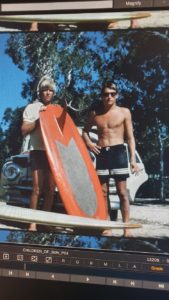 The early filmmakers were “shooting from within that culture,” as he puts it. They weren’t tied to or even schooled in TV-reporting clichés or rote ways of presenting cultural trends and movements of the time — “dropping by and knocking off a couple of wide shots” — but instead were steeped in the booming surfie way of life. “They were really thoughtful about what they were shooting and why they were shooting it. The films are unique from that point of view,” Hoff says. Much of the culture of surfing was as alien to most Australians as it was galvanizing for its adherents. It went hand in hand with the dawning of the healthy living movement, getting closer to “nature,” and “not working for the man.”
The early filmmakers were “shooting from within that culture,” as he puts it. They weren’t tied to or even schooled in TV-reporting clichés or rote ways of presenting cultural trends and movements of the time — “dropping by and knocking off a couple of wide shots” — but instead were steeped in the booming surfie way of life. “They were really thoughtful about what they were shooting and why they were shooting it. The films are unique from that point of view,” Hoff says. Much of the culture of surfing was as alien to most Australians as it was galvanizing for its adherents. It went hand in hand with the dawning of the healthy living movement, getting closer to “nature,” and “not working for the man.”
The Surf Film Archive
Jolyon Hoff and the Archive’s small team have been gathering up Australia’s lost or just misplaced surf films as “a part of our cultural history” in a country where more than 85 percent of the population lives along the coastline with plenty of hot weather.
The archive bought a 4K scanner — not the fanciest and most expensive, but quite adequate — and is preserving and digitizing any relevant film footage it can locate. That has meant a lot of frame-by-frame cleaning, repairing of broken splices, and the like. “We’ve been scanning non-stop and have tons of incredible new footage, and some old favorites you’ve never seen looking this good,” says a recent shout-out from the archive.
The Archive is collecting only images captured on film, not copies made to video tape, and has gone back to camera reels wherever possible, turning to screen prints when necessary. For devotees of film as a medium, that approach has one particularly gratifying outcome: seeing old-school film colors that are something of a relic of the past. After restoration, those really pop. To bring them out, Hoff formed a partnership with a post-production house, Elements Post Production — fittingly, that’s in Byron Bay, a mecca of surfing which transformed during the 1970s into a hub of “the alternative lifestyle.”
 “We wanted to see the images in their beautiful glory,” Hoff says. Element Post’s Billy Wychgel (left) is a film colorist grader with considerable renown in the Australian film world. “He loves these films because all these colors from all these different film stocks, you don’t get them any more,” says Hoff.
“We wanted to see the images in their beautiful glory,” Hoff says. Element Post’s Billy Wychgel (left) is a film colorist grader with considerable renown in the Australian film world. “He loves these films because all these colors from all these different film stocks, you don’t get them any more,” says Hoff.
Searching for the Surfies of Old
Hoff says that in the early years of his career as a documentary filmmaker, he had not been particularly to issues of preservation and restoration of film. But that changed when he made his Searching for Michael Peterson, released in 2009, about a fabled but tragic figure in surfing’s heyday who had suddenly disappeared. Looking for footage of the enigmatic Peterson, Hoff took to digging through garages and cupboards at the homes of the early surf filmmakers. “He was very hard to find, and very mysterious, and finding footage of him was really hard to find,” Hoff says.
The search involved talking to the filmmakers about the earlier times, and viewing what they’d shot. Hoff says he’d seen bits and pieces of what was in those personal archives, but seeing it again in that context, with its makers, stuck with him.
But what to do about that?
Covid to the rescue!
With restrictions on travel during the pandemic, Hoff says, his mind turned again to his earlier research: “As I was looking for footage of Michael, I saw all these other reels of footaage, and wondered ‘What’s on those reels.’ Fifteen years later I went back to try to find out.”
The result has been an online archive already populated with many rare, dusted-off documents of surfing’s major boom time. Among the material are first-ever images of the surf scene’s reach onto farflung Australian beaches as well of those of Indonesia. Those have much changed by developers cashing in on popularity ushered in by the surfie lifestyle as well as by population growth that has pushed large numbers of Australians to the edges of major cities and well beyond.
As the archive takes its collection on the road to surf festivals and related events, it is promising much that will delight the dedicated fans of the surfing movie — and not just old-school surfers but also a newer generation with a natural interest in the surfing scene of 30, 40, and 50 or more years ago.
The Archive’s search for material is progressing well, and bringing him and his colleagues into contact with filmmakers delighted to find their work still valued, Hoff says. The Archive now has contracts with most of the early surf filmmakers, and has adopted a practical, affordable approach to restoration. “We’re not restoring every frame, but we’re cleaning as much as we can,” he says.
{Click on an image to expand}
The result is perfectly enjoyable viewing, although of course many of the early films were rough. The filmmakers who made the ’70s films “weren’t super professional,” Hoff explains. “But they were serious about what they were doing. It cost quite a bit of money to get the 16 mil camera and then buy the film and then put it into a heavy wind-up camera and swim out into the giant surf and shoot your 100 foot and then swim back in.”
Now, he says, “the biggest problem is that the surf filmmakers are getting old and they’re popping off and their kids don’t know what to do with these big piles of film sitting in the corner of the garage. And once it gets to that point it gets complicated, or the copyright gets complicated, so a lot of it has been thrown out over the years.
“It’ll become more and more valuable over time.”
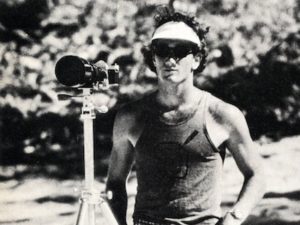 The trove of finds is growing. Those include footage from Paul Witzig, a key practitioner of the surfing film from the late 1960s on. His garage provided some 100 hundred-foot rolls of 16mm film that the Archive has restored and copied.
The trove of finds is growing. Those include footage from Paul Witzig, a key practitioner of the surfing film from the late 1960s on. His garage provided some 100 hundred-foot rolls of 16mm film that the Archive has restored and copied.
The Archive has also been working with the widow of another surf-film pioneer, Alan Rich (right). His first film, Salt Water Wine appeared in 1973, followed by the likes of Playgrounds in Paradise (1976) and Wizards of the Water (1981). The last of those, a landmark surf film, captured top surfers tracking choice waves around Australia, Indonesia, and Hawaii, all to a driving soundtrack featuring the hottest Australian bands of the day: The Angels, Cold Chisel, INXS, Icehouse, Mental as Anything…
Rich died in 2015 from cancer at the age of 67. Before moving permanently to Australia, he had begun surfing in his native Torrance Beach, in Los Angeles’ South Bay, in 1960. Still not a teen, he took up surf filming, and then also began to write for surfing publications in a novel, expressive way.
His widow, Evelyn Rich, has provided the Archive with access to his films after they had sat unwatched for 20 years.
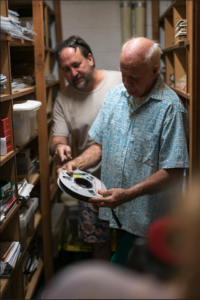
Jolyon Hoff, left, joins Dick Hoole in his personal archive.
Some aspects of the films will appeal primarily to surfers present and particularly past. They will know the deal when Hoff says, for example, “there’s a clip of Wayne Lynch in ’68, just surfing unreal for 1968.” They may well recognize such names as Dick Hoole, and know why Hoff is especially excited at having turned up footage from the earliest days of surfing’s boom in locations in Australia’s West such as Margaret River and Esperance and in Indonesian locations known in the surfing world as G-Land and Nias. “I’d be surprised if there was earlier film footage of those surf areas,” Hoff says.
To publicize the Archive, he has created That Was Then, This Is Now, a best-of compilation to take to such gatherings as the 2022 Screenwave International Film Festival where it premiered in April 2022. The 70-minute showreel, which Hoff created from private collections as well as government archives, particularly the National Film and Sound Archive, will also show at the upcoming Australian Surf Movie Festival, another event that demonstrates that the surfing film remains a vibrant cinematic genre although far removed from the rough-and-ready, noncommercial ethos of the early reels.
The Business of Archival Surf Films
For Jolyon Hoff and his colleagues, collecting, restoring, and displaying old-school surf films is first and foremost a labor of love, and of reclamation. “That era in surfing will never happen again,” says Hoff. “The films will become more and more valuable over time, at least culturally, not necessarily financially.” And yet, he says, in their day some of the films made decent money — “bigger than I’d ever have thought,” he says.
Back then, “four walling” surf films was often a matter of setting up in a surf club, or a pub, or a community hall. “They didn’t have the money to go into the big cinemas,” Hoff says. “But they knew they had an audience, and they knew that if they could do it cheaply enough, they’d get the kids in, and people would come, and they could make some money. It was such an authentic way to screen the films and to share stories, and really they were great Australian stories. And some of the films ended up becoming quite profitable.” Dick Hoole told Hoff that his Storm Riders, shot in 1981, and that toured Australia and the U.S., eventually made a million dollars at the box office. “Dick has all the receipts!” Hoff laughs.
“So it wasn’t necessary all done for love.” Of course, costs were different, and considerable: “You had to strike work prints, and you couldn’t just take out ads on the Internet, you had to take them out in surf magazines.”
Now, while Hoff’s motivation is not primarily commercial, by a long way, he does harbor some hopes that the Archive can become at least a break-even undertaking. “If we do all the scanning, then some of the surf brands or some surf-interested people can get behind us.” Throw in the odd fundraiser… As surfing publishers like Swellnet and Surfline have taken note, some surf-related retailers like Vissla and Bombora have provided some support.
Recently California-based Quiksilver, a boardsport specialist retailer came to the Archive to license some archival footage of the G-Land in East Java during its first days as a premier surfing location; the company will use that when the World Surf League tour travels there in late May, 2022.
Regardless of the level of support that eventuates, Hoff clearly is committed to the quest. He’s making an original documentary surf film, due for completion in mid-2023, again making use of the most compelling archival images. “The footage is really important historically for Australia, not just for surfing but for Australian, broadly,” he says.
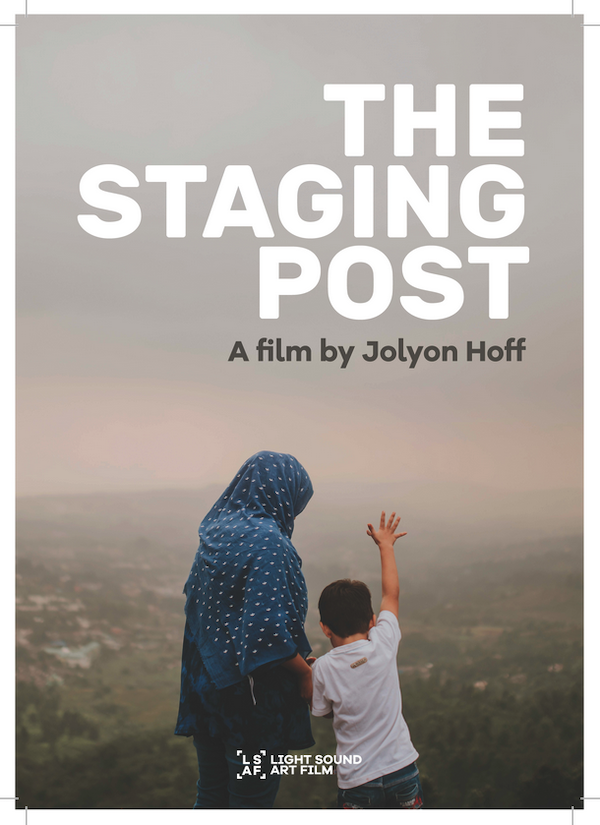 Judging by Hoff’s earlier output, the new film is sure to be compelling. His The Staging Post (2017) is a deeply moving and humane documentary film about Afghanistani and Pakistani Hazara refugees seeking settlement in Australia.
Judging by Hoff’s earlier output, the new film is sure to be compelling. His The Staging Post (2017) is a deeply moving and humane documentary film about Afghanistani and Pakistani Hazara refugees seeking settlement in Australia.
His Thievery Corporation: Live At The 9:30 Club (2011) was part documentary, part concert film about the band’s musical history and unusual stage shows.
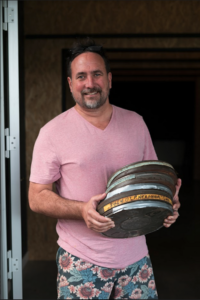 Hoff’s surf film’s working title is You Should Have Been Here Yesterday, a slyly teasing allusion to a comment often traded in beachside parking lots when, as Hoff puts it, “the surf break is rubbish and someone will come up to you and say ‘Oh, mate, you should have been here yesterday,’ or ‘You should have been here half an hour ago’ or ‘You should have been here five years ago,’ or ‘fifty years ago.’”
Hoff’s surf film’s working title is You Should Have Been Here Yesterday, a slyly teasing allusion to a comment often traded in beachside parking lots when, as Hoff puts it, “the surf break is rubbish and someone will come up to you and say ‘Oh, mate, you should have been here yesterday,’ or ‘You should have been here half an hour ago’ or ‘You should have been here five years ago,’ or ‘fifty years ago.’”
Like mythical waves, early surf films have held up well as cinematic spectacles. The Australian and New Zealand Surf Film Archive is making it possible to see what might otherwise forever be buried in the sands of time.
How to view the films of The Australian & New Zealand Surf Film Archive: go to the Archive’s website, register, and you’re in!
Previous Post: Framing Antarctica: Argentina’s Icy Film Legacy
Next Post: What the Self-Defense of Black Residents of Natchez Looked Like

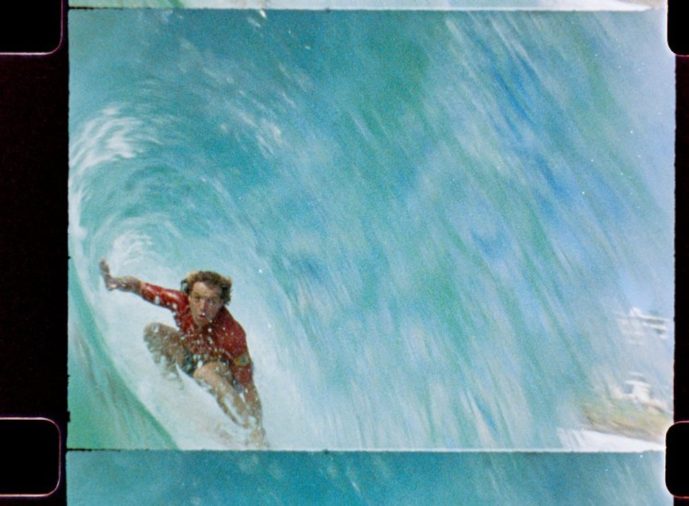
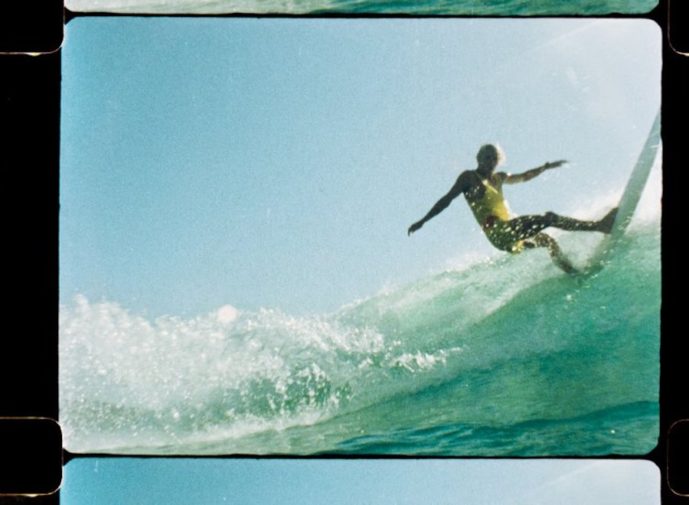
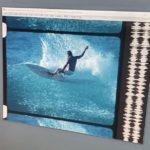
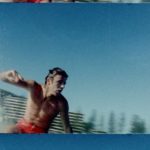
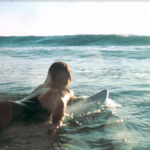

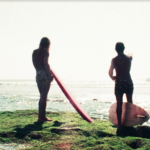
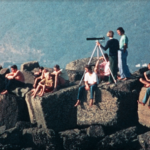
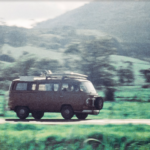
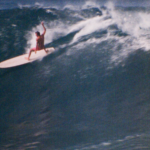
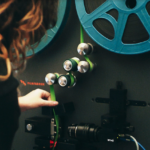
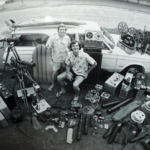
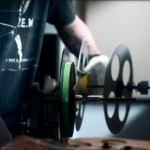
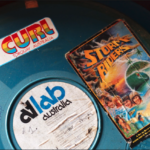
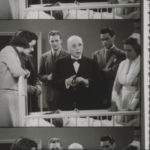


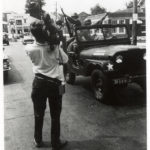
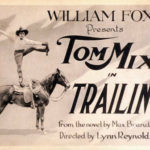
An international sailor and ski instructor started a now-defunct website called SurfersVillage.com. The site gained a massive following among surfing enthusiasts and eventually became known as the “Reuters of Surfing.” A recent article describes the history of the site and the archiving of the content: https://beyoungoutdoors.com/what-happened-to-surfersvillage-com/